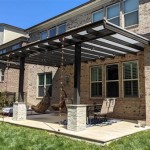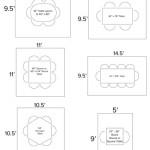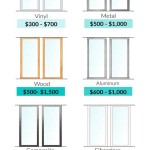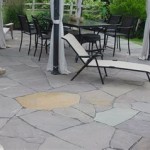DIY Double Patio Lounger: A Comprehensive Guide
Creating a comfortable and inviting outdoor space often involves strategic furniture selection. A double patio lounger offers a relaxing haven for two, fostering shared moments of tranquility. While commercially available loungers can be costly, a do-it-yourself approach provides significant cost savings while allowing for customization based on individual needs and aesthetic preferences. This article presents a detailed guide to constructing a robust and stylish double patio lounger, encompassing material selection, construction techniques, and finishing touches.
Key Considerations Before Construction
Prudent planning is paramount to a successful DIY project. Before commencing construction, several key aspects require careful consideration. These include material selection, design adaptations, and workspace preparation. Addressing these preliminaries ensures a smoother build process and a more satisfactory end result.
Material Selection: The longevity and aesthetic appeal of the lounger are intrinsically linked to the materials employed. Pressure-treated lumber is highly recommended for outdoor furniture due to its resistance to rot, decay, and insect infestation. This treatment prolongs the lifespan of the wood, minimizing the need for frequent repairs or replacements. Other suitable options include cedar and redwood, known for their natural resistance to weathering. The choice of fasteners is equally important; stainless steel or galvanized screws and bolts are essential to prevent rust and corrosion when exposed to the elements. The fabric used for cushions should be weather-resistant, UV-protected, and easy to clean. Options such as Sunbrella or outdoor-rated polyester offer durability and aesthetic appeal.
Design Adaptations: The provided design serves as a blueprint, but personal preferences and spatial constraints may necessitate modifications. Consider adjusting the overall dimensions to fit the available patio space or altering the backrest angle for optimal comfort. Adding features such as built-in side tables or cup holders can enhance functionality. Before making any alterations, create detailed sketches or use CAD software to visualize the changes and ensure they are structurally sound. Pay particular attention to the weight distribution and stability of the structure when modifying dimensions.
Workspace Preparation: A well-organized workspace significantly improves efficiency and safety. Clear the construction area of any obstructions and ensure adequate lighting. Gather all necessary tools, including a saw (circular or miter saw), drill, screwdriver, measuring tape, level, square, sandpaper, and safety glasses. Having a workbench or sawhorses provides a stable platform for cutting and assembling the lumber. A dust collection system or regular sweeping helps maintain a clean and safe work environment. Adhering to safety protocols is crucial; always wear safety glasses when cutting or drilling wood and use appropriate hearing protection when operating power tools.
Step-by-Step Construction Process
The construction of the double patio lounger can be divided into several distinct steps, each requiring precision and attention to detail. These steps include building the frame, attaching the slats, constructing the backrest, and finally, applying the finish.
Building the Frame: The frame provides the structural foundation for the lounger. Begin by cutting the lumber to the required dimensions according to the chosen design. Assemble the side frames first, ensuring that the joints are square and securely fastened with screws. Then, connect the side frames with cross supports, which will provide stability and prevent racking. Pay close attention to the alignment of the frame; use a level and square to ensure that all corners are 90 degrees. Reinforce the joints with wood glue in addition to screws for added strength. The frame should be robust enough to support the weight of two adults comfortably.
Attaching the Slats: The slats form the seating surface of the lounger. Cut the slats to the required length and evenly space them across the frame. Use screws to attach the slats to the frame, ensuring that they are flush with the top surface. Maintain a consistent spacing between the slats to allow for air circulation and prevent water from pooling on the surface. Consider using spacers to ensure uniform gaps. Pre-drilling pilot holes before driving in the screws prevents the wood from splitting, especially when working with hardwoods. The slats should be securely fastened to the frame to avoid any movement or instability.
Constructing the Backrest: The backrest provides support and comfort for the user. Construct a separate frame for the backrest, using the same lumber and joinery techniques as the main frame. Attach the backrest frame to the main frame using hinges, allowing it to be adjusted to different reclining angles. Ensure that the hinges are strong enough to support the weight of the backrest and the user. Add a support brace to the back of the backrest to provide additional stability. Consider adding padding or cushions to the backrest for enhanced comfort. Experiment with different angles to determine the optimal reclining position.
Applying the Finish: A protective finish enhances the appearance of the lounger and protects it from the elements. Begin by sanding the entire lounger to create a smooth surface. Remove any dust or debris with a damp cloth. Apply a primer to the wood to improve adhesion and prevent the finish from being absorbed unevenly. Choose a weather-resistant finish, such as an exterior-grade paint or stain, and apply it according to the manufacturer's instructions. Allow the finish to dry completely before using the lounger. Apply multiple coats of finish for added protection. Consider using a sealant to further protect the wood from moisture. Regular maintenance, such as cleaning and reapplying the finish as needed, will prolong the life of the lounger.
Customization and Enhancement Options
Beyond the basic construction, various customization options can elevate the functionality and aesthetic appeal of the double patio lounger. These include adding cushions, incorporating storage solutions, and integrating decorative elements.
Adding Cushions: Cushions significantly enhance the comfort of the lounger. Choose weather-resistant fabric and fill the cushions with high-density foam for optimal support. Consider using different sizes and shapes of cushions to create a layered and inviting look. Add decorative pillows to enhance the aesthetic appeal. Ensure that the cushions are securely attached to the lounger to prevent them from sliding or falling off. Regularly clean and maintain the cushions to prevent mildew and fading.
Incorporating Storage Solutions: Adding storage compartments to the lounger can provide a convenient place to store outdoor essentials, such as towels, sunscreen, and books. Consider building a storage box under the seating area or adding shelves to the sides of the lounger. Ensure that the storage compartments are weather-resistant and well-ventilated to prevent moisture buildup. Use hinges and latches to secure the storage compartments. The storage solutions should be integrated seamlessly into the overall design of the lounger.
Integrating Decorative Elements: Decorative elements can enhance the visual appeal of the lounger and complement the surrounding outdoor space. Consider adding decorative trim, such as beadboard or molding, to the frame. Paint or stain the lounger in a color that complements the existing patio furniture. Add decorative hardware, such as knobs and pulls, to the storage compartments. Incorporate plants or flowers into the design by adding planters or hanging baskets. The decorative elements should be chosen carefully to reflect personal style and create a cohesive look.

Modern Double Outdoor Chaise Lounger Ana White

How To Build A Double Lounger Homestead Survival Diy Outdoor Furniture Plans

Outdoor Chaise Lounger Rogue Engineer

Make Me A Quilt Diy Double Chaise Lounger And Cushion Lounge Chair Outdoor

Double Chaise Lounge Plans Myoutdoorplans

Kids Outdoor Double Lounge Chair

Modern Double Outdoor Chaise Lounger Ana White

Diy Double Chaise Lounger And Cushion Outdoor Daybed Furniture Cushions

Diy Build Plan Outdoor Double Lounge Chair Adjustable Patio 019

Kids Outdoor Double Lounge Chair
Related Posts








